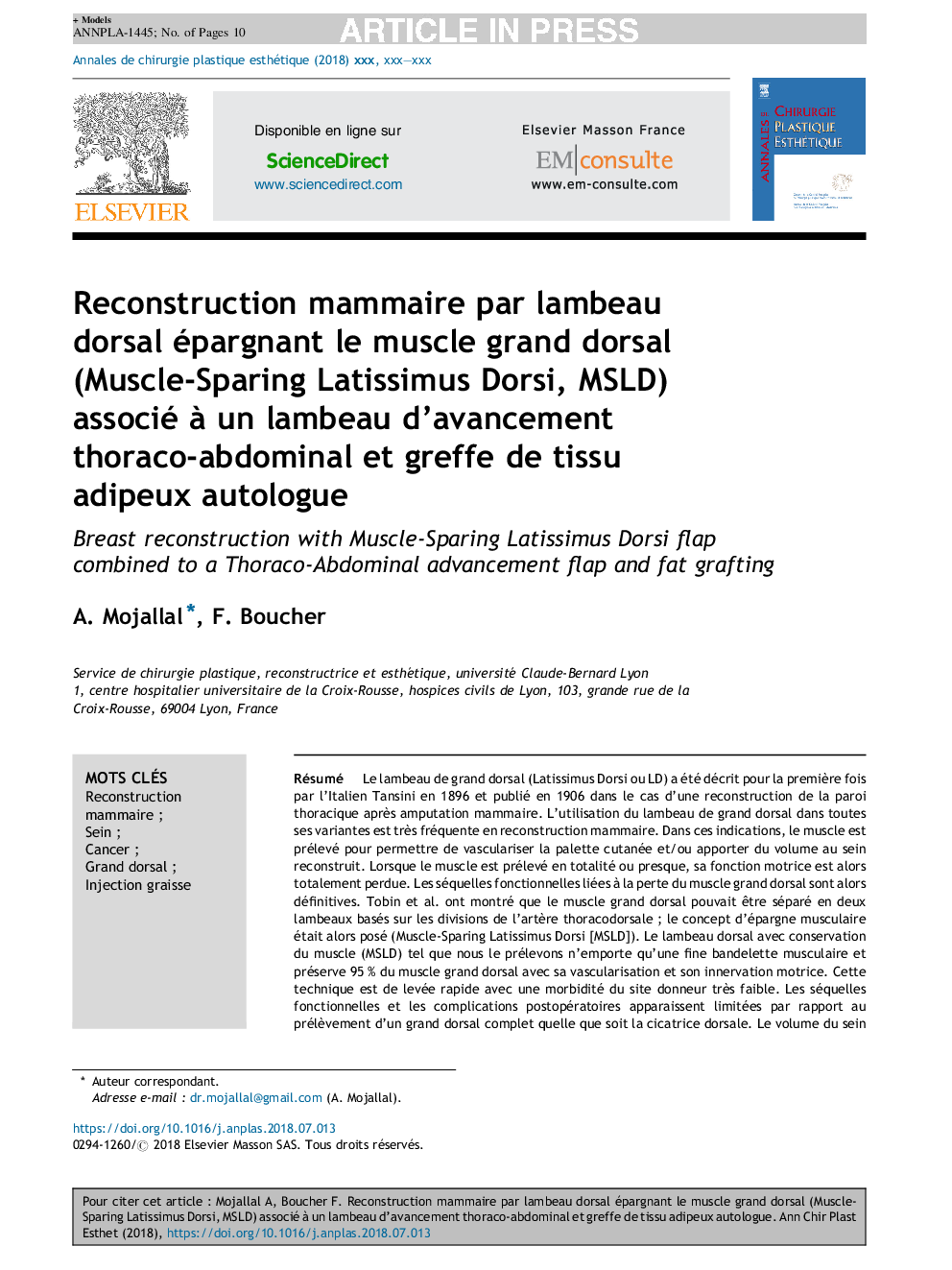| Article ID | Journal | Published Year | Pages | File Type |
|---|---|---|---|---|
| 11008511 | Annales de Chirurgie Plastique Esthétique | 2018 | 10 Pages |
Abstract
The Latissimus Dorsi flap (or LD flap) was first described by the Tansini in 1896 and published in 1906. It concerned a case of chest wall reconstruction after breast amputation. The use of the LD flap in all its variants is very frequent in breast reconstruction. In these indications, the muscle is harvested for skin paddle vascularization and/or for bringing volume to the reconstructed breast. When all or most of the muscle is taken, its motor function is completely lost. The functional sequelae due to the loss of the latissimus dorsi muscle are then definitive. Tobin et al. showed that the LD muscle can be separated into two flaps based on the division of the thoracodorsal artery; the concept of muscle-sparing was then posed (Muscle-Sparing Latissimus Dorsi [MSLD]). The MSLD as we perform now, concerns only a thin muscle strip and preserves 95% of the LD muscle with its vascularization and motor innervation. This technique is quick with very low donor site morbidity. The functional sequelae and postoperative complications appear limited compared to the harvest of a total LD whatever the posterior scar. The volume of the breast to be reconstructed is obtained by several sessions of fat grafting. We present here the anatomical bases and the surgical technique of the muscle-sparing latissimus dorsi associated with a thoracoabdominal advancement flap and fat grafting in breast reconstruction.
Related Topics
Health Sciences
Medicine and Dentistry
Dermatology
Authors
A. Mojallal, F. Boucher,
